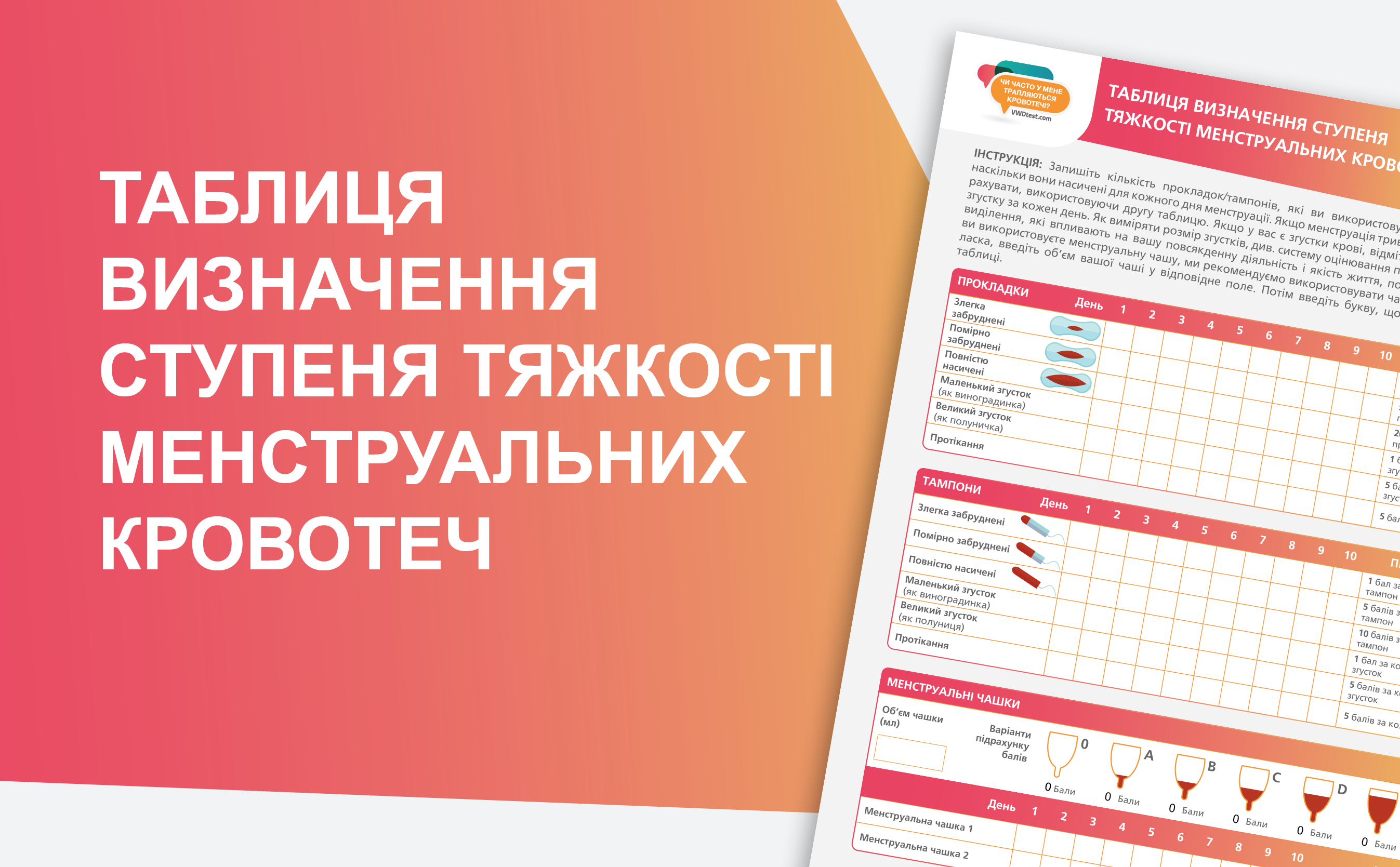
КЛІНІЧНІ МАТЕРІАЛИ
Хвороба фон Віллебранда (ХВ) є найпоширенішим порушенням згортання крові, але, на жаль, часто залишається непоміченим і недіагностованим. Діагностика – це складний процес, і як діагностика, так і лікування захворювання потребують залучення мультидисциплінарних фахівців. 1
Веб-сайт VWDtest.com надає корисні ресурси та інструменти для оцінки симптомів кровотечі та діагностики ХВ, розроблені професором Корралесом та професором Бернторпом. До них належать швидкий онлайн-тест на кровотечу, який допомагає оцінити симптоми кровотечі, а також карту оцінки менструальної кровотечі для пацієнток із сильними менструальними кровотечами, яку можна скачати.
Тут ви знайдете поради експертів від професора Корралеса, професора Бернторпа та їхніх колег про те, як найкраще вести пацієнтів з ХВ. Вони також підготували кілька тематичних досліджень пацієнтів з недіагностованою ХВ: кровотеча після видалення зуба, рясні менструальні кровотечі, легкі синці та часті носові кровотечі. Ці випадки ілюструють типові симптоми порушення згортання крові у пацієнтів та підходи до первинної діагностики.
Для отримання додаткової інформації про ХВ та глобальну кампанію з підвищення обізнаності про VWDtest.com ми рекомендуємо вам ознайомитися з останніми публікаціями на цю тему.

Про що б ви хотіли дізнатися?
Оберіть опцію нижче:











I understand that you’re looking to get the post ID in WordPress. In WordPress, each post has a unique post ID associated with it. You can retrieve the post ID using various methods, depending on the context in which you’re working. Here are a few ways to get the post ID in WordPress:

His mother reported a history of heavy menstrual periods and taking iron supplements for severe anaemia. The patient’s grandmother and maternal aunts also had heavy periods. The paediatrician ordered screening laboratory tests for the patient, including an activated partial thromboplastin time and prothrombin time, both of which returned normal results. A complete blood count revealed low haemoglobin (9.8 g/dL) associated with a low mean corpuscular volume at 69 fL, suggestive of iron deficiency anaemia. The patient was referred to a haematologist for further evaluation.
Due to the presence of the above bleeding symptoms and family history that were compatible with a bleeding disorder, a von Willebrand panel was ordered. The results showed low VWF activity (41%), borderline low VWF and coagulation factor VIII protein levels (50% and 52%, respectively), along with normal VWF multimer pattern and distribution. These results supported the diagnosis of mild type 1 VWD.


His mother reported a history of heavy menstrual periods and taking iron supplements for severe anaemia. The patient’s grandmother and maternal aunts also had heavy periods. The paediatrician ordered screening laboratory tests for the patient, including an activated partial thromboplastin time and prothrombin time, both of which returned normal results. A complete blood count revealed low haemoglobin (9.8 g/dL) associated with a low mean corpuscular volume at 69 fL, suggestive of iron deficiency anaemia. The patient was referred to a haematologist for further evaluation.
Due to the presence of the above bleeding symptoms and family history that were compatible with a bleeding disorder, a von Willebrand panel was ordered. The results showed low VWF activity (41%), borderline low VWF and coagulation factor VIII protein levels (50% and 52%, respectively), along with normal VWF multimer pattern and distribution. These results supported the diagnosis of mild type 1 VWD.

His mother reported a history of heavy menstrual periods and taking iron supplements for severe anaemia. The patient’s grandmother and maternal aunts also had heavy periods. The paediatrician ordered screening laboratory tests for the patient, including an activated partial thromboplastin time and prothrombin time, both of which returned normal results. A complete blood count revealed low haemoglobin (9.8 g/dL) associated with a low mean corpuscular volume at 69 fL, suggestive of iron deficiency anaemia. The patient was referred to a haematologist for further evaluation.
Due to the presence of the above bleeding symptoms and family history that were compatible with a bleeding disorder, a von Willebrand panel was ordered. The results showed low VWF activity (41%), borderline low VWF and coagulation factor VIII protein levels (50% and 52%, respectively), along with normal VWF multimer pattern and distribution. These results supported the diagnosis of mild type 1 VWD.











